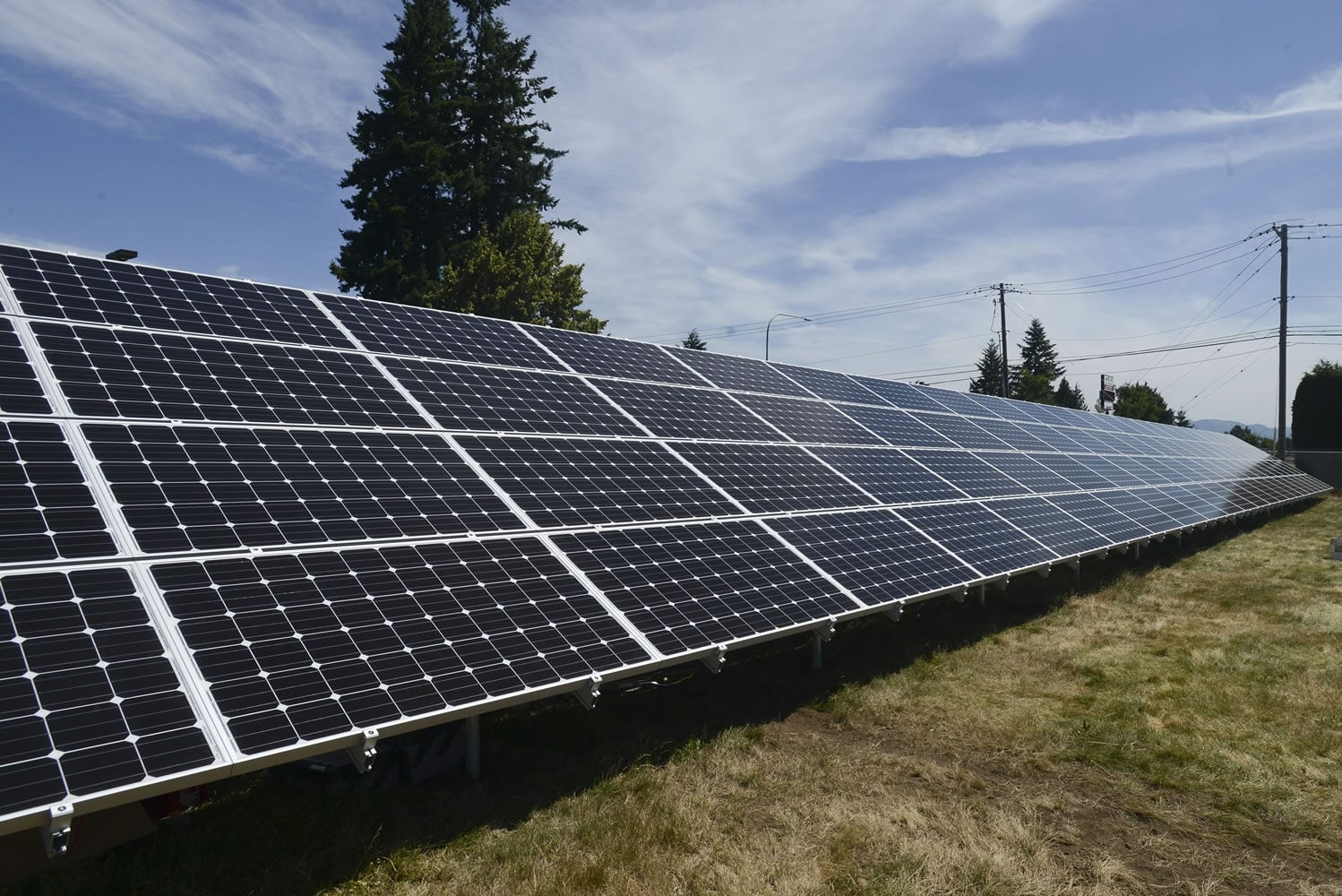It’s rare in these parts that a sunny summer is looked upon as a “worst-case scenario.”
With huge growth in solar projects in the county last year, Clark Public Utilities finds itself staring at a finite pool of state money to divvy out to an overflowing pool of solar users. State subsidy payments are poised to drop, and the utility has stopped new applications for the state money in order to avoid a further cut in payments to those already in the program.
The utility’s three commissioners on Tuesday were told they would have to cut the solar subsidies or take up to $2.2 million out of their budget over the course of five years to maintain the current level of state incentives.
A decision on that could come in two weeks, but General Manager Wayne Nelson made it clear that the utility has to reduce the incentives. He said it appeared the utility had no other choice, legally.
“In the event you’re oversubscribed, the utility must reduce incentive payments,” Nelson said.
Legality question
In the worst-case scenario — a dry, sun-soaked summer — existing payments for rooftop solar installations would have to drop 12 percent this year and 25 percent between 2017 and 2020. Up to $25,000 from the state is paid out per project over the course of five years, based on energy production at a rooftop solar installation.
On Tuesday, Clark Public Utilities staff gave examples of what customers stand to lose with the reduced incentives.
A ratepayer who just installed an 8-kilowatt rooftop solar array would see his or her maximum five-year state incentives fall from a total of $25,000 to $19,400.
Community solar subscribers — those who bought shares of utility-owned solar arrays as opposed to building their own — will see a similar drop in incentive payments, though not so much as to lose money on their investment.
For someone with 100 community solar credits — a $10,000 investment — payments would fall from $16,000 over five years to $12,416.
If the utility makes up the $2.2 million state funding deficit itself, ratepayers would be subsidizing the county’s 1,200 solar users. Commissioner Jane Van Dyke said she wants to explore that option, but Nelson said the utility first needs to see if it’s even legal.
“There are major obstacles,” he said. “This came to light (Jan. 20). This has been a fire drill for the last four or five days.”
A huge influx of solar projects at the end of last year led to the realization at Clark Public Utilities that it committed to paying more solar incentives than the state allows, spokeswoman Erica Erland said. That led to the temporary halting of new state subsidy applications, which commissioners could formalize into a moratorium in two weeks.
“There’s going to be a conflict between some people’s expectations,” Nelson said. “But a much larger amount of people will be upset without the moratorium,” since adding new customers to the incentive pool would spread it thinner, resulting in lower payments to all solar incentive recipients.
Nelson said the recent increase in solar installations — the county is averaging 20 to 25 new rooftop arrays per month — was likely driven by the projected end of federal solar incentives. Those were to end in December 2016 but have been extended by two years. Federal payments aren’t affected by the shortfall in state money.
The state shortage is caused by a formula that dictates the maximum amount of money it will pay a utility, which passes on the money to customers to offset the cost of solar installations.
Worth keeping alive
Thirteen of the state’s utilities, including Clark, have too many solar customers and not enough money to deliver incentives at the level they’d hoped to provide. Eight have already decided to put a moratorium on giving out more solar incentives.
Snohomoish PUD customers are facing a 30 to 50 percent reduction in incentive payments, and Seattle City Light and Puget Sound Energy customers are seeing up to a 30 percent reduction.
Even though it’s a victim of its own popularity, the energy-saving program is worth keeping alive, commissioners said.
“We really need to push the Legislature to continue these incentives,” Commissioner Jim Malinowski said.
A measure currently in front of lawmakers, House Bill 2346, would tweak the incentive program but still see it end in 2020.
“The legislature intends to provide an incentive sufficient to promote installation of systems through 2020, at which point the legislature expects that the state’s renewable energy industry will be capable of sustained growth and vitality without the cost recovery incentive,” reads the text of the original bill.
Nelson said those who own shares of the community solar program are able to sell them back.




